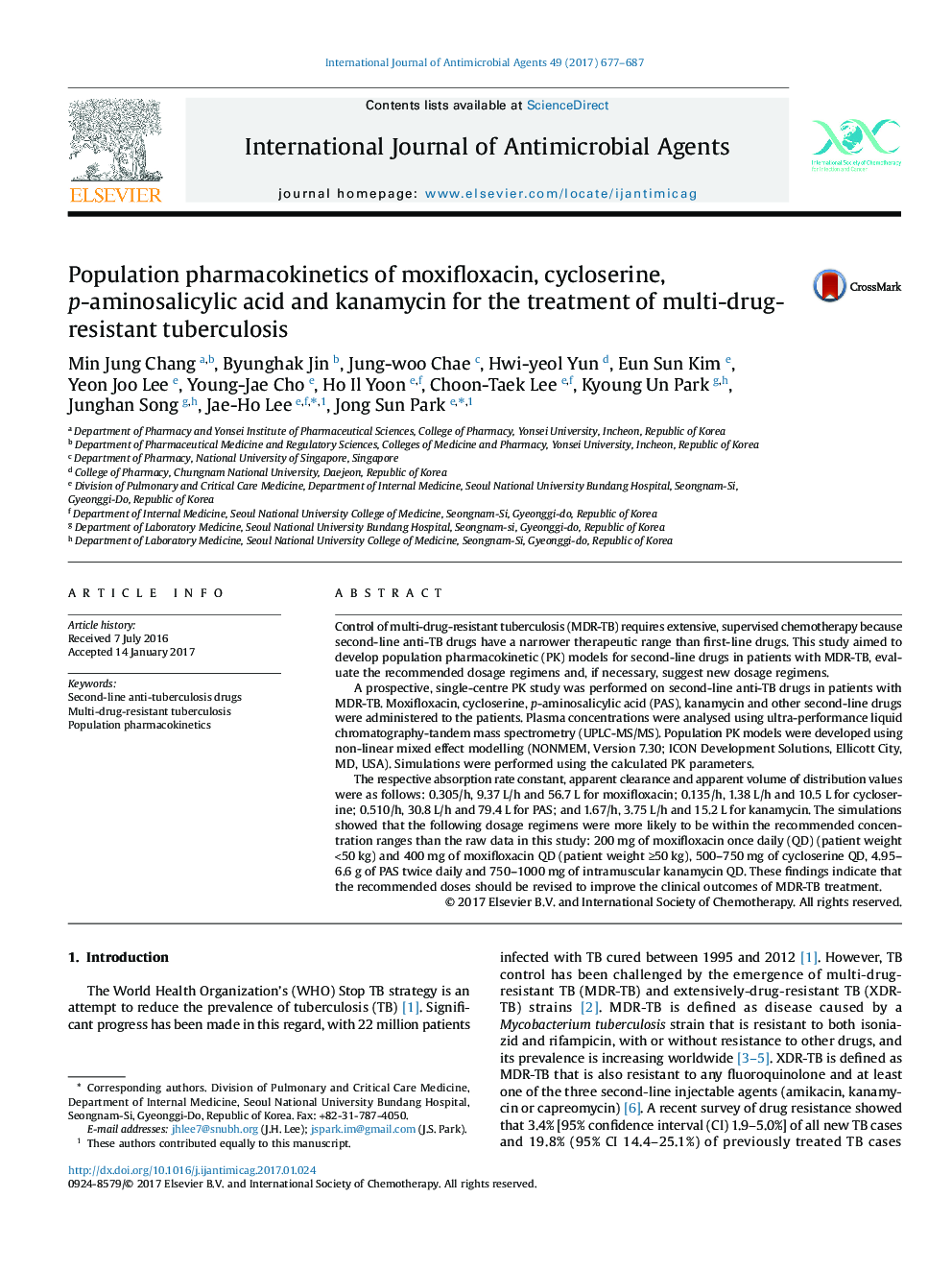| کد مقاله | کد نشریه | سال انتشار | مقاله انگلیسی | نسخه تمام متن |
|---|---|---|---|---|
| 5666907 | 1591742 | 2017 | 11 صفحه PDF | دانلود رایگان |

- Population pharmacokinetic models of second-line anti-tuberculosis (TB) drugs in multi-drug-resistant TB were developed.
- Dosages of second-line anti-TB drugs were slightly different from previous studies.
- Pharmacokinetic parameters of moxifloxacin were influenced by patients' weight.
Control of multi-drug-resistant tuberculosis (MDR-TB) requires extensive, supervised chemotherapy because second-line anti-TB drugs have a narrower therapeutic range than first-line drugs. This study aimed to develop population pharmacokinetic (PK) models for second-line drugs in patients with MDR-TB, evaluate the recommended dosage regimens and, if necessary, suggest new dosage regimens.A prospective, single-centre PK study was performed on second-line anti-TB drugs in patients with MDR-TB. Moxifloxacin, cycloserine, p-aminosalicylic acid (PAS), kanamycin and other second-line drugs were administered to the patients. Plasma concentrations were analysed using ultra-performance liquid chromatography-tandem mass spectrometry (UPLC-MS/MS). Population PK models were developed using non-linear mixed effect modelling (NONMEM, Version 7.30; ICON Development Solutions, Ellicott City, MD, USA). Simulations were performed using the calculated PK parameters.The respective absorption rate constant, apparent clearance and apparent volume of distribution values were as follows: 0.305/h, 9.37âL/h and 56.7âL for moxifloxacin; 0.135/h, 1.38âL/h and 10.5âL for cycloserine; 0.510/h, 30.8âL/h and 79.4âL for PAS; and 1.67/h, 3.75âL/h and 15.2âL for kanamycin. The simulations showed that the following dosage regimens were more likely to be within the recommended concentration ranges than the raw data in this study: 200âmg of moxifloxacin once daily (QD) (patient weight <50âkg) and 400âmg of moxifloxacin QD (patient weight â¥50âkg), 500-750âmg of cycloserine QD, 4.95-6.6âg of PAS twice daily and 750-1000âmg of intramuscular kanamycin QD. These findings indicate that the recommended doses should be revised to improve the clinical outcomes of MDR-TB treatment.
Journal: International Journal of Antimicrobial Agents - Volume 49, Issue 6, June 2017, Pages 677-687